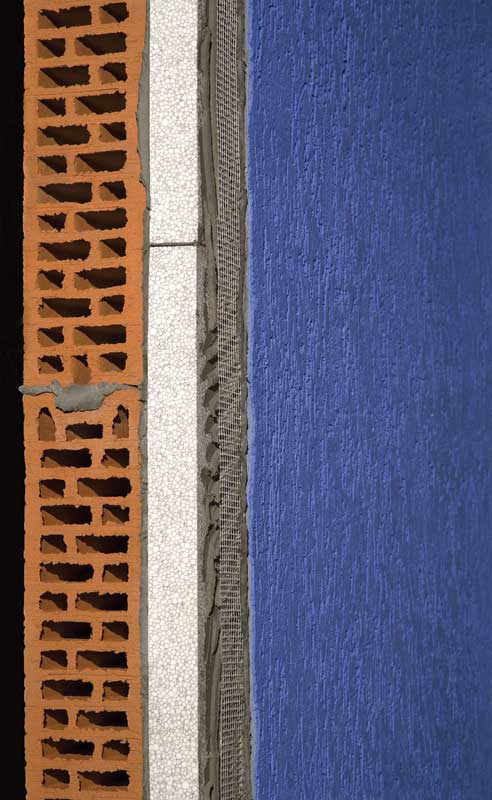Comparing Polystyrenes: Looking at the differences between EPS and XPS

by Jason Burgess
Insulation is a critical component to specify when designing a functional, cost-effective, and energy-efficient building. One method to insulate a building is by installing 50 to 152 mm (2 to 6 in.) of rigid foam insulation on the exterior side of the wall framing. Two of the most frequently installed types of rigid foam insulation are expanded and extruded polystyrene (EPS and XPS). Both serve the same basic function: providing a means to manage the passage of heat in a building system. However, they differ in important ways.
The primary responsibility of any insulating construction material is to offer positive thermal performance. However, this is not the only factor to account when specifying a rigid foam insulation material. It is also critical to know how it will perform under several situations.
XPS is manufactured in a continuous extrusion process that produces a closed cell form of foam insulation. EPS, on the other hand, is manufactured by expanding spherical beads in a mold and then using heat and pressure to fuse the beads together.
Each product has proponents claiming one out performs the other. However, it is key to understand each product may be more suited for a particular use than the other. This can be made clearer by examining each product’s thermal and moisture protection, fire and water resistance, and implications for sustainably designed projects.
Thermal and moisture protection
R-value is a measure of a material’s resistance to heat transfer. The higher the R-value, the better the material can insulate. The usual procedure for testing a material’s R-value is ASTM C518, Standard Test Method for Steady-state Thermal Transmission Properties by Means of the Heat Flow Meter Apparatus. This test method requires a technician to measure the thermal resistance of a specimen placed between a cold plate and a hot plate.

Rigid foam insulation delivers excellent R-values for such a thin product, but not all rigid foam offers the same thermal performance. The choice of the insulation should be made after considering the effect its characteristics will have on the performance of the walls.
EPS is the insulation used most widely in insulated concrete forms (ICFs), structural insulated panels (SIPs), and exterior insulation and finishing systems (EIFS). It has the lowest average R-value of rigid foam insulation, typically R-4 per 25 mm (1 in.). The actual R-value of EPS depends on its density, with higher-density foams having higher R-values ranging from about 3.6 to 4.2 per 25 mm. Less-expensive EPS—typically sold at home improvement warehouse stores—is 0.4 kg (1 lb) density per 0.02 m3 (1 cf), appropriately called Type-I density EPS. Type-I products typically offer about R-3.9 per 25 mm or R-7.8 at 50 mm (2 in.).
However, Type-II EPS, rated at 0.6 kg (1.5 lb) nominal density, has an R-value between R-4.15 and R-4.2 per 25 mm. A 50-mm thick sheet would be R-8.3 to R-8.4. Type-II EPS is what most distributors will ship unless otherwise specified. In fact, many contractors refer to Type-II EPS as ‘standard density,’ not ‘high-density.’ (This information comes from the Green Building Advisor, 2015 edition in the Forum and can be found at www.greenbuildingadvisor.com.)
XPS, at about R-5 per 25 mm, has only a slightly better thermal performance than EPS. The thermal insulation performance of EPS and XPS in identical densities is quite close. However, EPS with the same level of density is less expensive. XPS is usually avoided in areas where materials with less density are needed or where the material, which is not produced below a certain density, is not applicable. In such a construction case, use of EPS as a less-dense material would provide the required insulation at a much lower cost.



